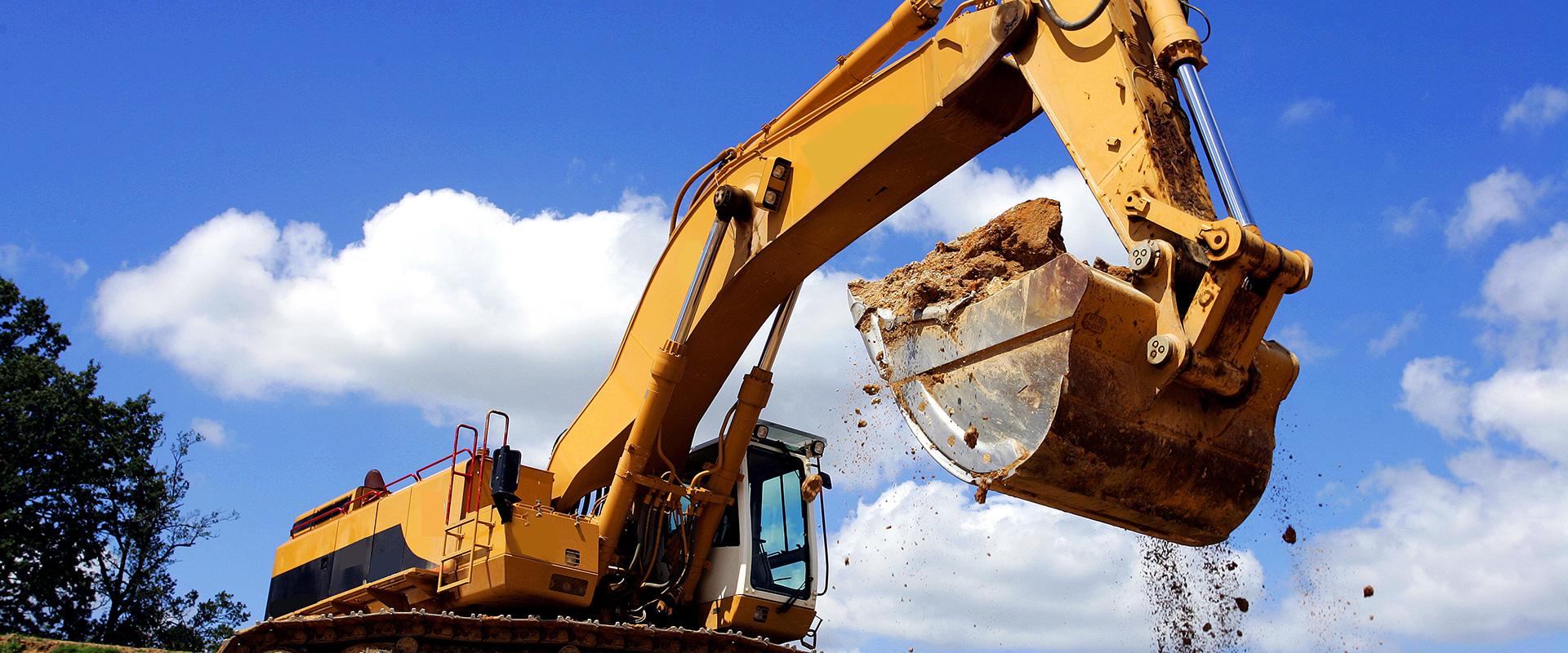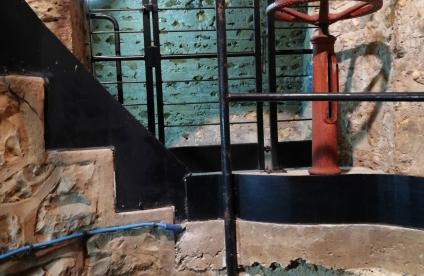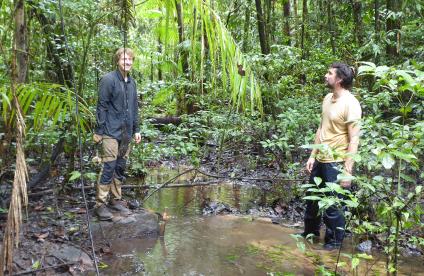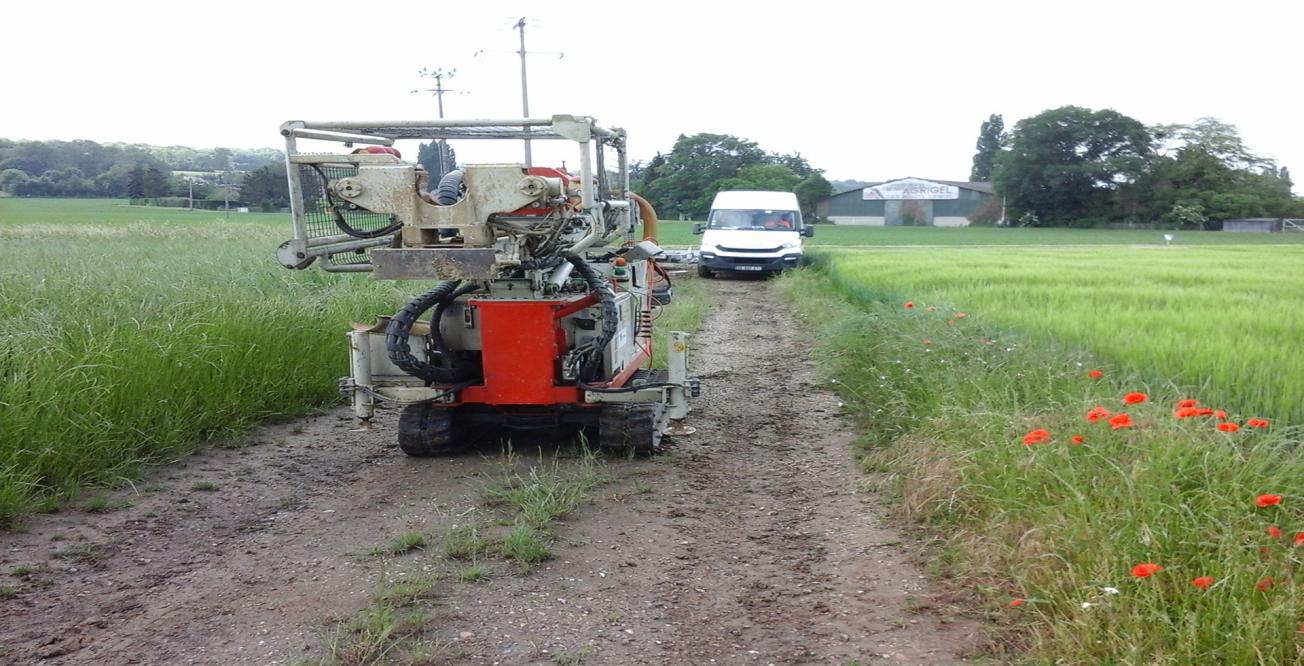
Putting the drill rig in place before drilling and soil sampling (2020).
© BG Ingénieurs Conseils
Issues and needs
In 2017, the Construction and Civil Engineering sector was responsible for 76% of the waste produced through economic activities, highlighting the challenges linked to waste prevention and recycling set out in the the French Energy Transition Act. In Ile-de-France and Normandy, the development of the circular economy at local and regional levels is one of the major priorities of the regions' policies and plans aimed at reducing and managing waste from construction and civil engineering sites.
Excavated soil is a widespread resource whose potential for off-site reuse is still under-exploited. Indeed, reusing excavated soil from construction sites can meet three key objectives: waste recycling, reducing demand on new raw materials and optimising transport distances (thereby reducing the associated greenhouse gas emissions). The prerequisites for developing the circular economy sector are understanding the chemical quality of soils and ensuring their traceability.
The reuse of excavated soil as an alternative backfill material in urban development projects requires case-by-case studies of the chemical compatibility between donor and recipient sites. The GeoBaPa project aims to determine the typical levels of chemical elements present in the soils of the Seine Valley, thereby removing the need to characterise recipient sites and simplifying the environmental feasibility studies.
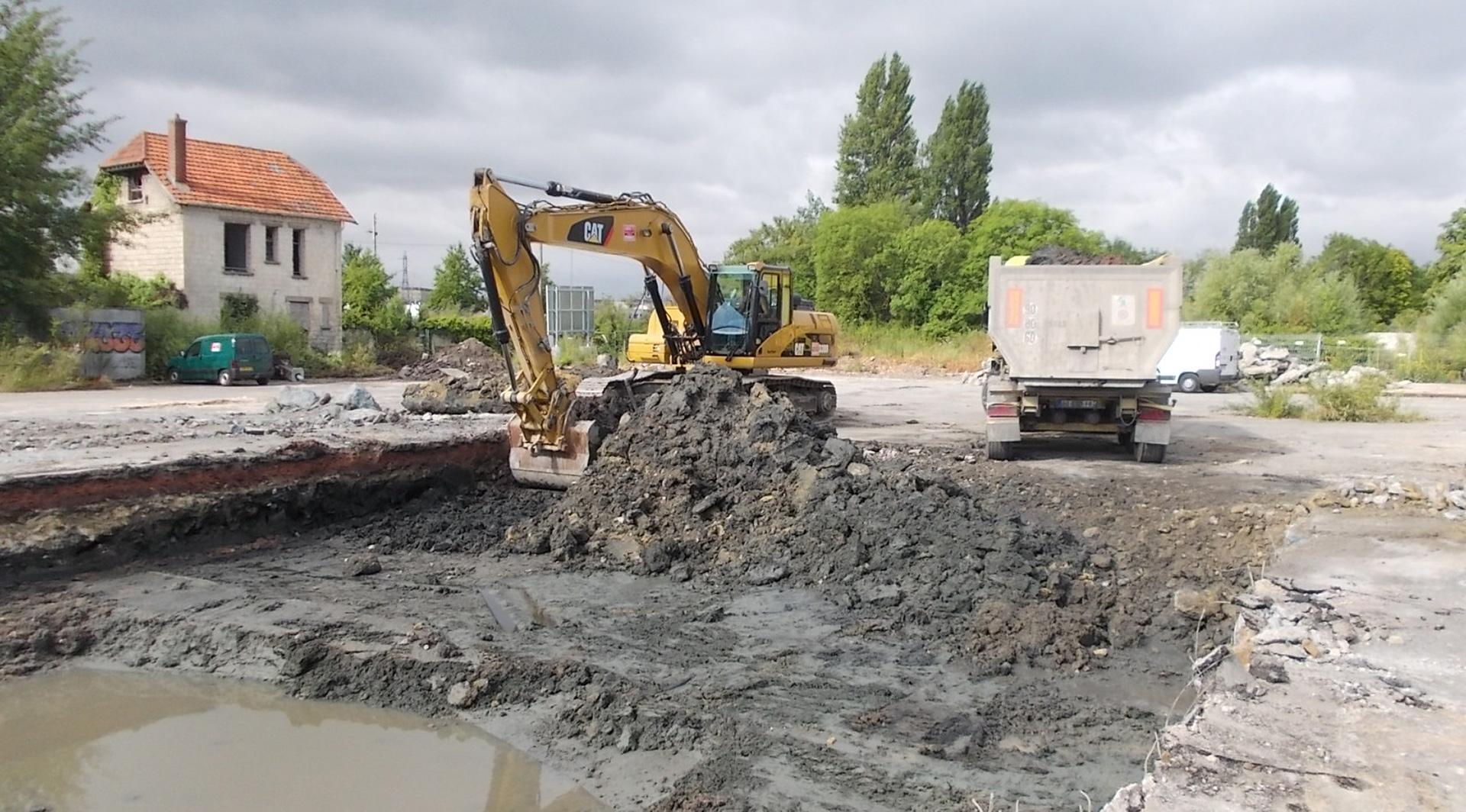
Involving both public and private players, GeoBaPa is an original project that focuses on the key issue of the circular economy in the construction industry. It contributes to the development of the circular economy by drawing on an exemplary scientific approach and a tool that ensures the transparency and traceability of soil movements, which is crucial with regard to regulatory guidelines. It addresses both environmental and economic requirements.
Results and use
A precise map of the quality of the pedo-geochemical background of the Paris basin was drawn up by processing more than 7,700 samples, based on data collected from 5 major contracting authorities (the Société du Grand Paris, the City of Paris, the Etablissement Public Foncier d'Ile-de-France, the City of Le Havre, and the Etablissement Public Foncier de Normandie) and on more than 200 samples taken from boreholes by project partners in the Ile-de-France and Normandy regions. Consequently, a free, public-access, operational reference base has been set up to facilitate and secure excavation/backfilling operations by providing a transparent framework that is adapted to field practices.
The study shows that the chemical quality of the soils varies greatly from one area of the Seine Valley to another, particularly when they have been impacted by human activities (backfilled areas). Environmentally-friendly reuse will require precise and stringent traceability. The mapping established by the project therefore meets a key need for construction and civil engineering companies that wish to "green" their work sites.
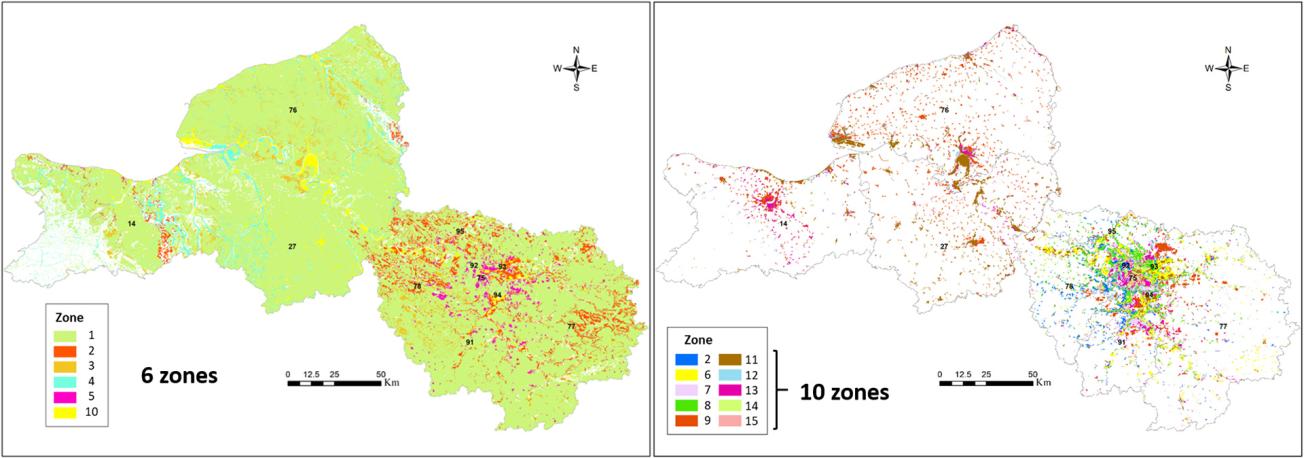
Map of the zone-by-zone breakdown of the territory, corresponding to a set of pedo-geochemical background values (on the left, a map of the zones corresponding to natural terrains and on the right those corresponding to backfilled land).
© GeoBaPa
BRGM's role
BRGM ensured that the methodology used in the GeoBaPa project was consistent with the studies carried out at national level in this field and that it took into account existing feedback, such as information from the BDSolU database, the Working Group on Sampling, and the methodological guide for off-site recycling of excavated soil. BRGM also contributed its expertise on how best to optimise the geostatistical processing of the data and on the relevance of the pedo-geochemical background values obtained at the end of the project.
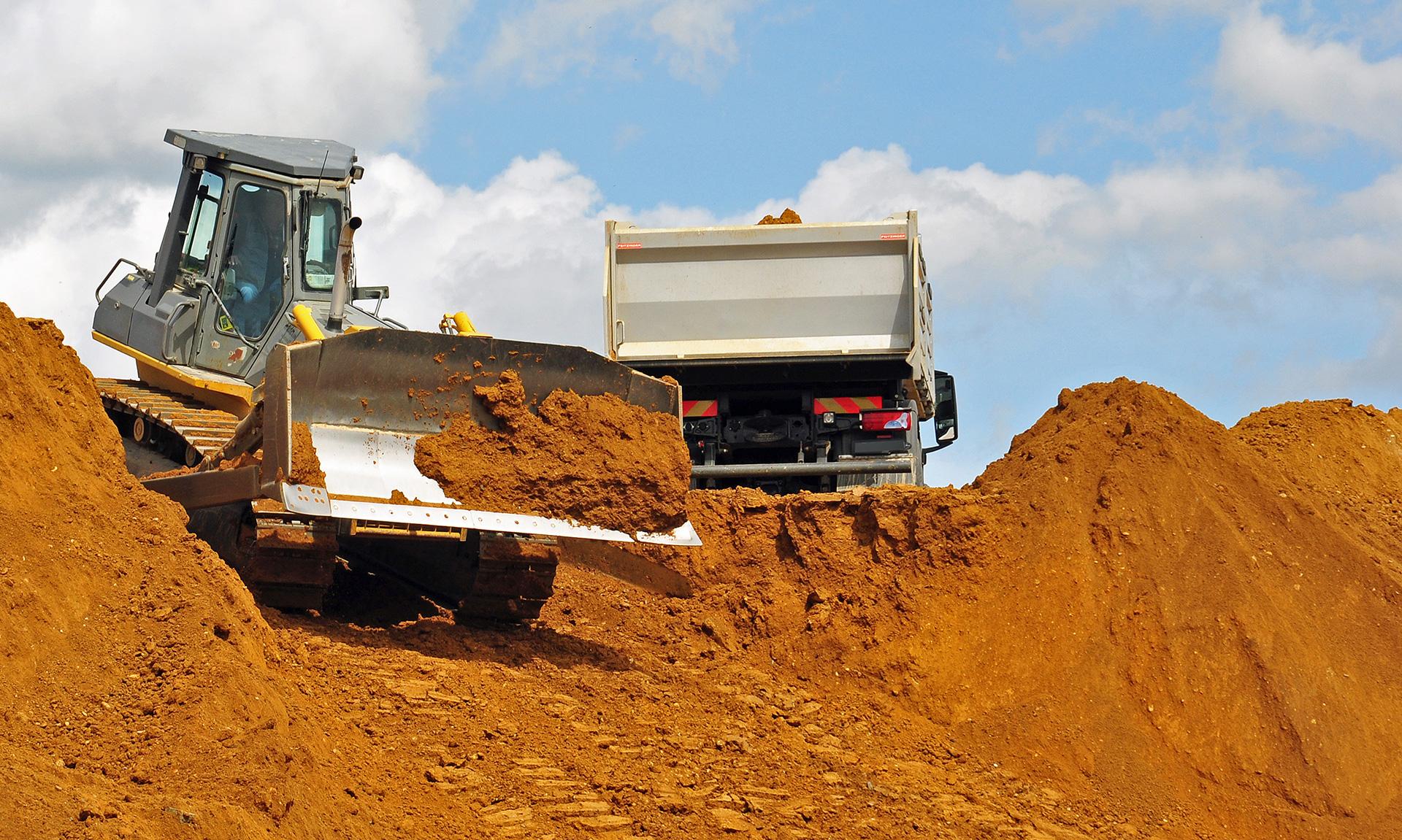
This unprecedented public/private partnership aims to change the practices of project managers and contractors. How can companies work together to produce as little waste as possible? One avenue being pursued is prevention, which is perfectly illustrated by the GeoBaPa project: having a good knowledge of an area in order to contribute to the recycling and protection of non-renewable natural resources, while enabling safe urban development and spatial planning thanks to a transparent framework that is adapted to field practices and the new regulations on waste management and prevention. So, see you in two years to measure how far we've come by then!
Partners
Coordinated by Soltracing, the GeoBaPa project is sponsored by the Ile-de-France and Normandy regions, ADEME Ile-de-France and the Inter-ministerial Delegation for the Development of the Seine Valley (DIDVS). It draws on the expertise of a technical team made up of a drilling specialist (Esiris Group), a consultancy firm specialising in Polluted Sites and Soils (BG Ingénieurs Conseils), a consultancy firm specialising in geostatistics (Geovariances) and BRGM.

